If you have ever bought an enrichment toy you were sure your pet would go crazy for, only to discover they preferred the cardboard box it came in, you may wonder why you’re spending the money. Pets need physical and mental stimulation for their wellbeing, but when it comes to enrichment toys, getting creative can save you money and increase your furry friend’s enjoyment. Our team at Animal Hospital of Stoney Creek shares do-it-yourself enrichment toys you can make for your pet.
Why go DIY for your pet’s toys?
You don’t need to write off every store-bought toy for your pet, but consider the benefits of DIY enrichment toys, including:
- Cost savings — Pet products can be expensive, but DIY toys can be made from materials you already have at home, making them a financially savvy alternative.
- Customization — Every pet is unique. While some dogs might go bonkers over a squeaky toy, others might prefer a chewable one. Some cats might adore feathered toys, while others might be more interested in balls of yarn. You can create toys that cater to your pet’s preferences and play style, ensuring they get the enrichment they need with toys they actually will play with.
- Environmentally friendly — By opting for DIY toys, you’re minimizing waste and often reusing and recycling materials, thereby promoting a more sustainable and eco-friendly way to keep your pet entertained.
- Fun — Making DIY toys isn’t only beneficial for your pet, but it also can be a rewarding experience for you. It’s a chance for you to indulge your creativity, and no matter how the final product turns out, seeing your pet’s joy when playing with a toy you’ve made is sure to bring a smile to your face.
Tips to create pet-safe enrichment toys
Use the following tips when making DIY toys for your pet to ensure they can safely enjoy your creation:
- Consider your pet’s habits — Before you dive into your crafting project, take some time to observe your pet’s habits and preferences. Are they aggressive chewers? Do they have a habit of ingesting non-food items? Understanding your furry companion’s behaviors will help you choose materials that are safe and appropriate for them.
- Select safe materials — Not all materials are safe for pets. Some pose choking hazards, while others can be toxic if ingested. Avoid small embellishments such as beads and buttons that your pet could swallow. Also, avoid materials that could splinter or break into sharp pieces, such as certain types of plastic or wood. If you’re using fabric, choose durable and non-toxic options like cotton. If you’re not sure about a material’s safety, consult with your veterinarian before incorporating it into your pet’s toy.
- Use caution with string, ribbon, and yarn — While string, ribbon, and yarn might seem to be ideal materials for DIY cat toys, your feline friend could swallow these materials, leading to intestinal blockage—a severe and potentially life-threatening condition. If you use these materials, ensure they are securely attached and cannot be easily pulled off and ingested.
- Regularly inspect your pet’s toys — Over time, even the most durable toys can wear out and pose a safety risk. Regularly inspect your DIY toys for signs of wear and tear. Look for loose parts, fraying, and other signs of damage. If a toy is showing signs of significant wear, dispose of it and replace it with a new one.
- Monitor playtime — Always supervise your pet’s playtime, especially when introducing a new DIY toy. Watch how they play with the toy, and if your pet is able to tear it or pull off parts, remove the toy immediately.
DIY pet enrichment toy ideas to get you started
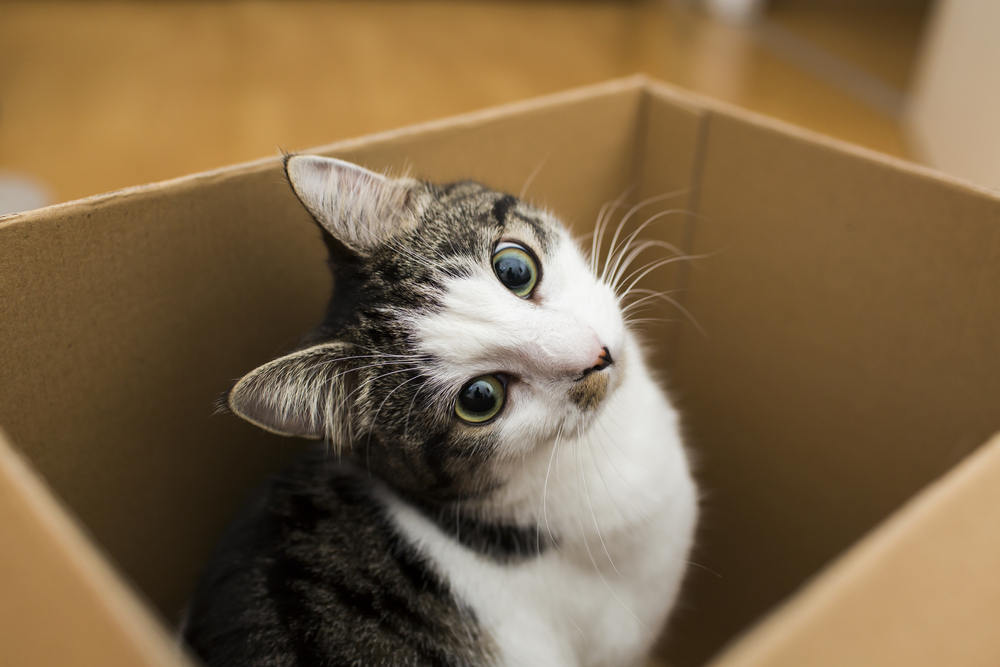
Try your hand at one or more of these simple DIY enrichment toys, and get your pet’s brain and body going:
- Hide-and-seek muffin tin — This toy doesn’t take much preparation or crafting. Simply use a muffin tin and a few tennis balls to make a fun foraging game for your dog. Hide a few of their favorite treats under tennis balls placed in the muffin tin, and let them put their nose and brain to work to sniff them out.
- DIY puzzle box — Use a shallow box, like a shoebox, and some cat toys or lightweight balls. Cut different-size holes in the top of the box—large enough for your cat to reach into with a paw but not so large that they can easily retrieve the toys. Place the toys inside and watch as your cat works to get them out.
- T-shirt-wrapped water bottle — If your pup is a chewer, they will enjoy the crinkly sounds and feel of a water bottle wrapped in fabric or an old T-shirt. Cut fabric strips from your T–shirt, wrap the shirt around a water bottle, and tie the strips around the water bottle for a satisfying chew toy for your dog.
DIY enrichment toys are cost-effective, customizable, eco-friendly, and a fantastic way to stimulate your pet’s mind. If you have questions about your pet’s mental or physical wellbeing or need to set up their next wellness exam, schedule an appointment with our team at Animal Hospital of Stoney Creek.



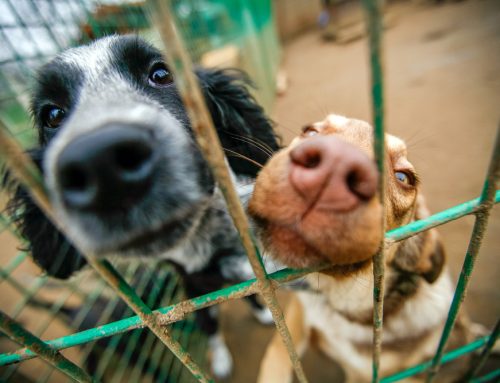
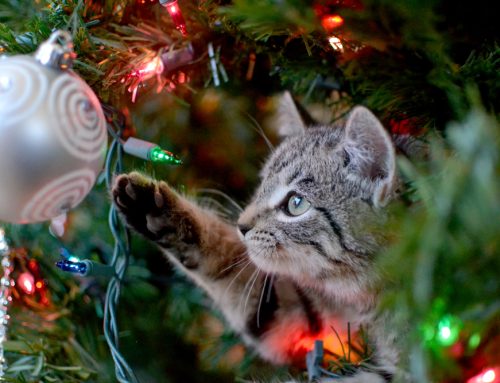

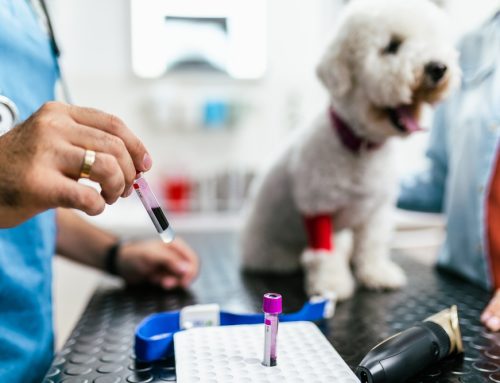
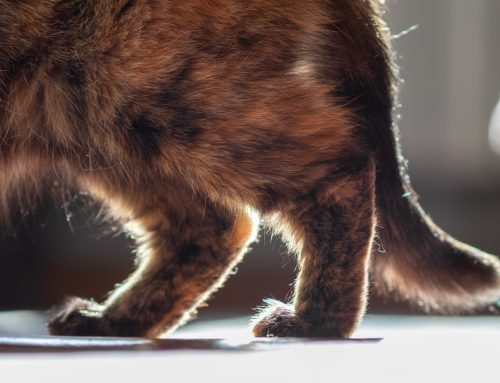
Leave A Comment